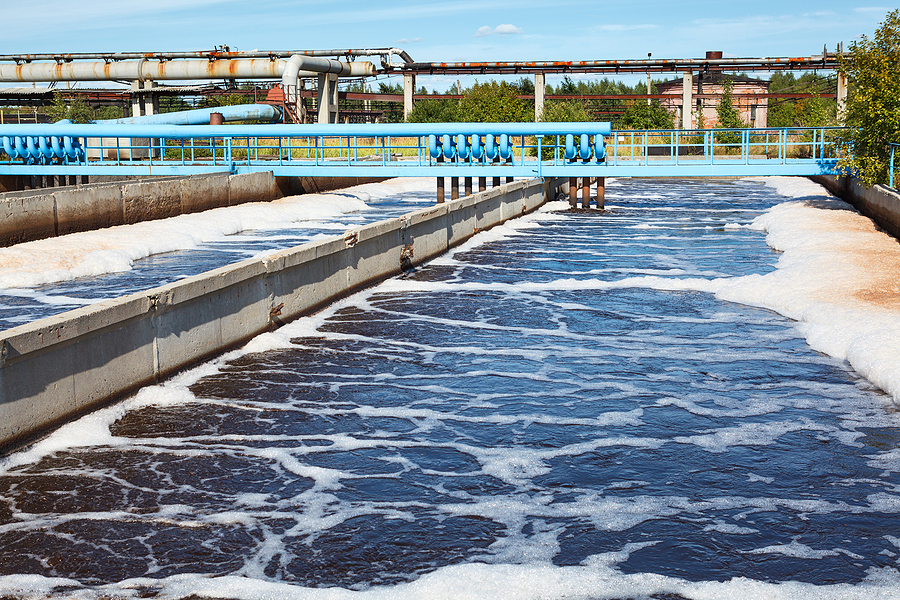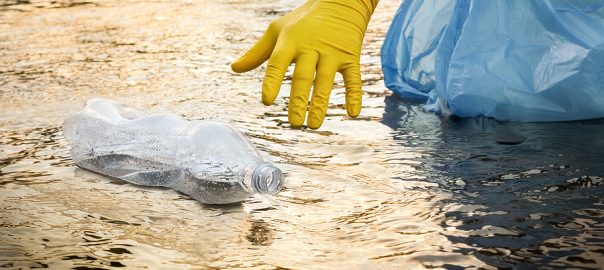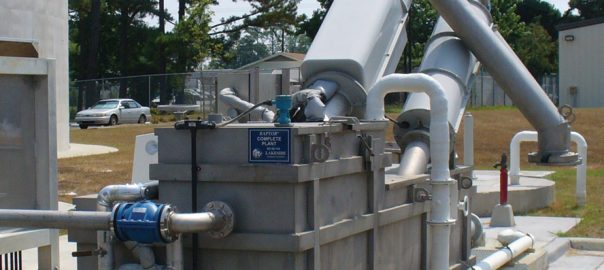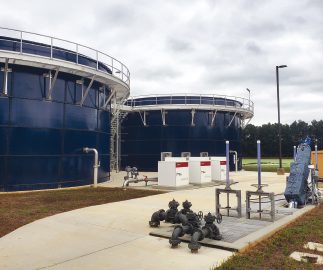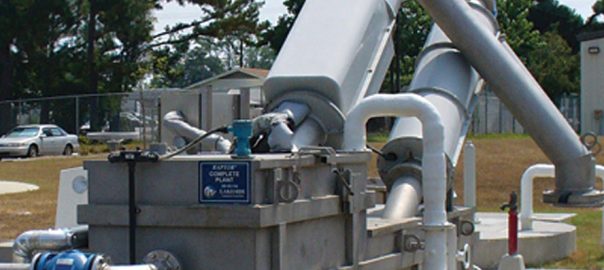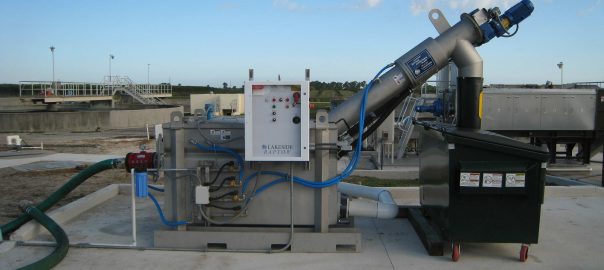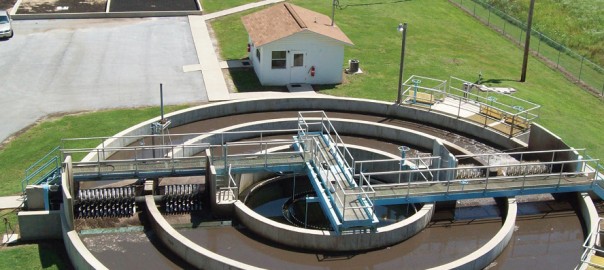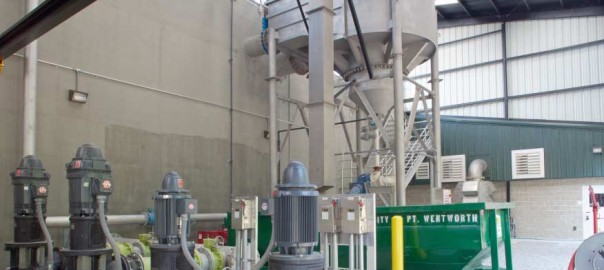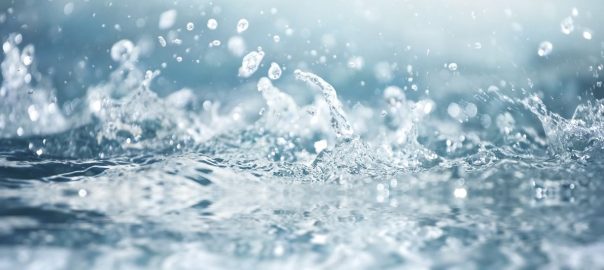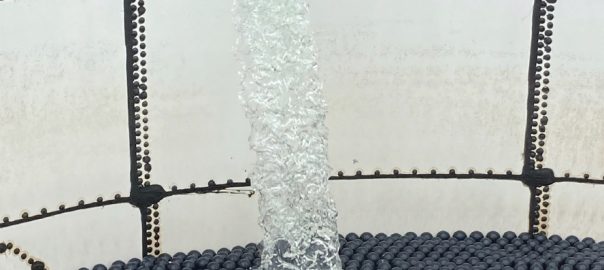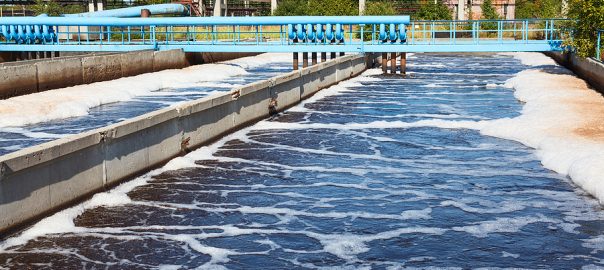
The arrival of spring can pose more challenges to a wastewater treatment plant. Warmer temperatures encourage bacterial activity. Heavy spring rains increase sewer discharges, especially in districts with connected sewer systems and storm drains.
Combined sewer overflows are found in approximately 700 municipalities. While the U.S. is making strides in separating them, they’re still out there. When there are heavy rains, stormwater and sewer water combine and raise the risk of flooding if a plant isn’t equipped for the rapid increase in flow rates. These combined systems are found in the following states.
California
Connecticut
Georgia
Illinois
Indiana
Iowa
Kansas
Kentucky
Maine
Maryland
Massachusetts
Michigan
Missouri
Nebraska
New Hampshire
New York
Ohio
Oregon
Pennsylvania
Rhode Island
South Dakota
Tennessee
Vermont
Virginia
Washington
West Virginia
Wisconsin
Wastewater treatment uses a lot of energy, and the importance of cleaning the water of harmful contaminants and items like phosphates that encourage the growth of harmful algae is crucial. Plants have to balance getting the job done as efficiently and quickly as possible while also doing it in an eco-friendly way. Eco-friendly biological wastewater treatment is an effective, sustainable option.
The Basics of Conventional Wastewater Treatment
A conventional wastewater treatment process involves removing trash like plastic wrappers, bone fragments from animals that get into the sewer system, and solids like solidified fats, food particles, and human waste. Those need to be separated first. Once as many solids are removed as possible, chemical treatment is the go-to option.
Chemicals like chlorine (bleach) were used to kill germs. Sometimes, UV light was introduced as the chemicals had to dissipate before the wastewater was tested to ensure safe levels of things like E.coli, mercury, phosphates, etc. before the treated water goes to a lake, stream, or water treatment facility for processing into drinking water.
When chemicals are used, they need to be removed to safe levels. You can’t release highly chlorinated water into a lake as that chemical can kill fish and other aquatic life.
If water still has high phosphate levels, it acts as a rapid-grow fertilizer for algae that takes oxygen from other plants and animals, and some algae are dangerous to animals. Dogs that swim in water with blue-green algae blooms die from exposure to anatoxins found within them.
To ensure water is clean, continual testing is important. Still, the chemicals, treatments, and repeated processes use a lot of energy as water is aerated, pumped from one area to another, and filtered to remove solids.
The Benefits Gained by Embracing Biological Treatment
Biological wastewater treatment is a more popular option as it’s an eco-friendly, sustainable wastewater treatment process. It starts the same. A trash rake is used to remove plastic wrappers, bags, and other trash that can damage equipment like pumps and create clogs. Screens and trash rakes complete this process.
Once trash is removed, the wastewater goes into tanks where there are three stages of water treatment: primary, secondary, and tertiary. It involves these steps.
Activated Sludge: Aerobic microbes help break down organic materials. Pumps help circulate the water to create the oxygen the microbes need to do their work.
Anaerobic Digestion: Microbes no longer need oxygen and start producing methane and carbon dioxide as they complete their work.
Anoxic Growth: Microbes eventually turn to other items such as sulfates to grow.
Through these stages, there are different types of microorganisms used to break down organic materials in the wastewater. The goal is to ensure their health and ability to multiply. This keeps the system running smoothly, even if extra wastewater comes in during a spring flood.
In addition to the microbes, fixed-bed or moving-bed bioreactors contain porous biofilm that houses the microbes and can help with filtration when they’re used. A biological trickling filter is another option. Wastewater passes through the filter that’s often made of sand, ceramic, or even coconut fibers.
All of these components offer the major benefit of requiring less energy. They don’t use a lot of electricity, so you lower the plant’s carbon footprint and energy bills at the same time. When you have microbes producing biogas like methane, some systems capture that gas and convert it to useful fuel for the heating and cooling within the facility.
Sludge that’s removed can be composted or even dried and turned into fertilizer that can be used to help nourish plants and trees in forests and fields.
Lakeside Equipment’s biological treatment equipment includes the following options:
CLR Process – A closed loop reactor (CLR) is a tank that’s in a loop that allows for the constant circulation of wastewater. It’s effective in cold weather and is easily configured to meet different needs.
Magna Rotor Aerators – An effective way to mix solids and keep them from settling. The stainless steel blades help large numbers of microorganisms thrive, even if there’s a shock load, thanks to the ability to aerate and provide oxygen.
Sequencing Batch Reactors – This is a cost-effective option for biological treatments. It’s a single basin that uses timers to fill, mix, aerate, settle, decant, and remove sludge without creating a lot of foam. There are sequencing or continuous sequencing options.
Submersible Mixers and Recirculation Pumps – Mixers help stir up and aerate the water while recirculation pumps move the wastewater from one tank to another. Both are designed to last and work efficiently without a lot of energy consumption.
You can also get a Package Treatment Plant that reduces your footprint and requires less manpower. It includes a Closed Loop Reactor in the outer loop and a Spiro Clarifier in the center. It’s a great choice when you don’t have a lot of space and need a system that does the job well.
Where Is the Future of Sustainable Wastewater Treatment Heading?
There’s a water crisis in many communities. Even with unusually heavy rains and snowfall in areas that were running low, it’s only a temporary solution. The future of sustainable wastewater treatment will be in recycling water.
While people may be grossed out by the thoughts of the sewer water being cleaned of waste and bacteria, treated to ensure it’s safe for drinking and household use, and returned to public water systems, it’s important for sustainability.
Biological treatments that help treat wastewater and turn it into crystal clear, contaminant-free drinking water are essential in the evolving nation. Lakeside Equipment is excited to be at the heart of this future in wastewater treatment.
Lakeside Equipment has been helping people gain cleaner water for nearly 100 years. We’ve been there through many advancements and are excited for the future. Reach us online or by phone to learn more about steps you can take to establish eco-friendly biological wastewater technologies within your district.

